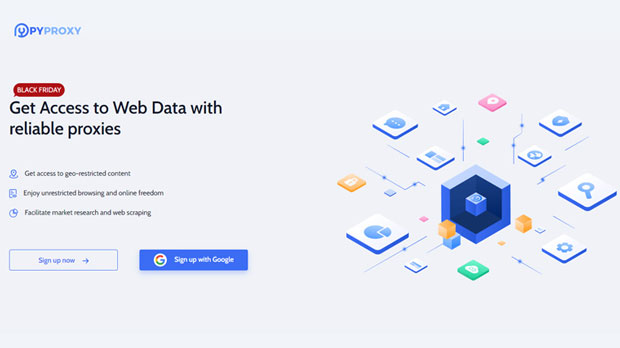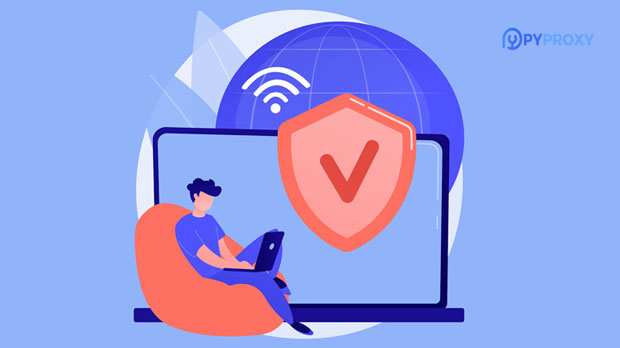Free vs Paid,Pros and Cons of US Socks5 Proxy Comparison
When it comes to choosing a socks5 proxy for users in the US, there are two main options: free and paid. Both types offer distinct advantages and disadvantages that users should carefully consider before making a decision. Free socks5 proxies are often appealing due to their zero-cost nature, but they come with limitations, such as slower speeds, security concerns, and unreliable connections. On the other hand, paid Socks5 proxies provide enhanced performance, better security, and more consistent service, but they require financial investment. In this article, we will compare the pros and cons of free and paid US Socks5 proxies, helping you to make an informed decision that aligns with your needs. 1. Cost Considerations: Free vs. PaidThe most obvious difference between free and paid Socks5 proxies is the cost. Free Socks5 Proxies: Free proxies are, as the name suggests, entirely free to use. This is the most attractive feature for many users, especially those who need temporary or occasional access to a proxy without wanting to spend any money. Since there are no financial commitments, free proxies can be an appealing solution for tasks like browsing the web anonymously or bypassing geo-restricted content on a budget.However, free proxies often come with significant trade-offs. Many of these proxies are supported by ads or have limited availability, which can affect the user experience. Additionally, their performance and reliability may not meet the standards required for serious or long-term use.Paid Socks5 Proxies: Paid Socks5 proxies, on the other hand, require users to pay a subscription fee. The cost typically varies depending on the provider and the services offered. While the price may seem high compared to free options, the added value often justifies the investment for users who require a more consistent and secure proxy experience. Paid proxies often come with dedicated support, faster speeds, and more reliable uptime, making them a worthwhile option for businesses or individuals who rely on proxy services for their operations.2. Performance and SpeedWhen it comes to proxy use, performance and speed are crucial factors that determine the quality of the user experience.Free Socks5 Proxies: Free proxies typically suffer from slower speeds due to the higher volume of users sharing the same server resources. This congestion leads to slower browsing, buffering when streaming, and delayed responses during other activities like downloading files. Moreover, since free proxy providers rarely invest in infrastructure, the server quality is often subpar, which can further degrade performance.Additionally, free proxies may have more limitations on data usage or bandwidth, causing users to experience throttling, which restricts their internet speed. This is especially problematic for tasks that demand high-speed connections, such as streaming HD content, online gaming, or downloading large files.Paid Socks5 Proxies: Paid proxies offer significantly better performance. They tend to provide dedicated resources for users, which results in faster speeds, reduced latency, and no throttling. Additionally, paid proxy providers often invest in high-quality servers with advanced infrastructure, ensuring better speed, uptime, and performance. This makes paid proxies an ideal choice for users who need high-performance and uninterrupted service for tasks like gaming, video streaming, or bulk data scraping.3. Security and PrivacyFor many users, security and privacy are paramount when choosing a Socks5 proxy. These factors are especially crucial if you intend to access sensitive data or perform activities like online shopping, banking, or handling personal information.Free Socks5 Proxies: While free Socks5 proxies can provide some level of anonymity, they often come with significant security risks. Free proxies may not encrypt your data, which exposes you to potential data interception or cyberattacks. Some free proxies even log your activity, collecting information that could be used for malicious purposes or sold to third parties. In the worst case, free proxies might redirect users to harmful websites or inject malicious scripts into their browsing sessions, further compromising privacy.Free proxies are more likely to be unregulated, and the absence of a service-level agreement (SLA) means that there’s little recourse if you experience problems related to security or data handling.Paid Socks5 Proxies: Paid proxies, by contrast, typically offer more robust security features, such as encryption and data protection protocols. These proxies often include privacy guarantees and a clear privacy policy that ensures your browsing activity is not logged or shared with third parties. Providers of paid proxies are more likely to implement security protocols like SSL encryption, safeguarding sensitive information from potential threats.Additionally, paid proxy services generally have dedicated customer support teams that can assist you with any security concerns, ensuring that your data remains safe during use.4. Reliability and UptimeThe reliability of a Socks5 proxy is another key factor that separates free and paid services.Free Socks5 Proxies: Free proxies are often less reliable than paid ones. Since these proxies are typically maintained by volunteers or operate on limited funding, they can go offline unexpectedly or experience frequent downtimes. Additionally, the availability of free proxy servers may be inconsistent, and users may find themselves unable to connect at certain times or locations. If your activities require constant uptime, free proxies may not be the best option.Paid Socks5 Proxies: Paid Socks5 proxies are designed for reliability, with many providers offering 99% uptime guarantees. These providers often operate on professionally managed servers with redundancies in place to prevent downtime. Paid services also tend to offer faster issue resolution through dedicated customer support teams. This level of reliability makes paid proxies the better choice for users who need continuous, uninterrupted access to proxy services for business or high-priority personal tasks.5. Use Cases and Target AudienceChoosing between free and paid Socks5 proxies largely depends on the user’s specific needs.Free Socks5 Proxies: Free proxies are typically suited for casual users who need occasional or non-critical access to a proxy. For instance, individuals who want to unblock geo-restricted content for light browsing or use the proxy for non-sensitive activities might find free proxies to be sufficient. However, they may not be ideal for business purposes or high-risk tasks that require higher security and reliability.Paid Socks5 Proxies: Paid proxies are more suited for individuals and businesses with critical needs. For example, users involved in web scraping, online gaming, accessing sensitive data, or maintaining high privacy standards will benefit from the premium features of paid proxies. Businesses that rely on proxies for operations such as market research or data collection should prioritize paid proxies to ensure they meet the required performance and security standards.6. ConclusionIn conclusion, the choice between free and paid US Socks5 proxies depends on your specific requirements. Free proxies offer the benefit of no cost but come with drawbacks like slower speeds, security vulnerabilities, and limited reliability. They are best suited for casual, low-risk tasks. On the other hand, paid proxies provide superior performance, enhanced security, and reliability, making them the preferred choice for users who need consistent, fast, and secure proxy services for more demanding applications. When selecting a Socks5 proxy, it's important to assess your priorities—whether it's cost, performance, or security—to make an informed choice that best suits your needs.
2025-01-06

























































